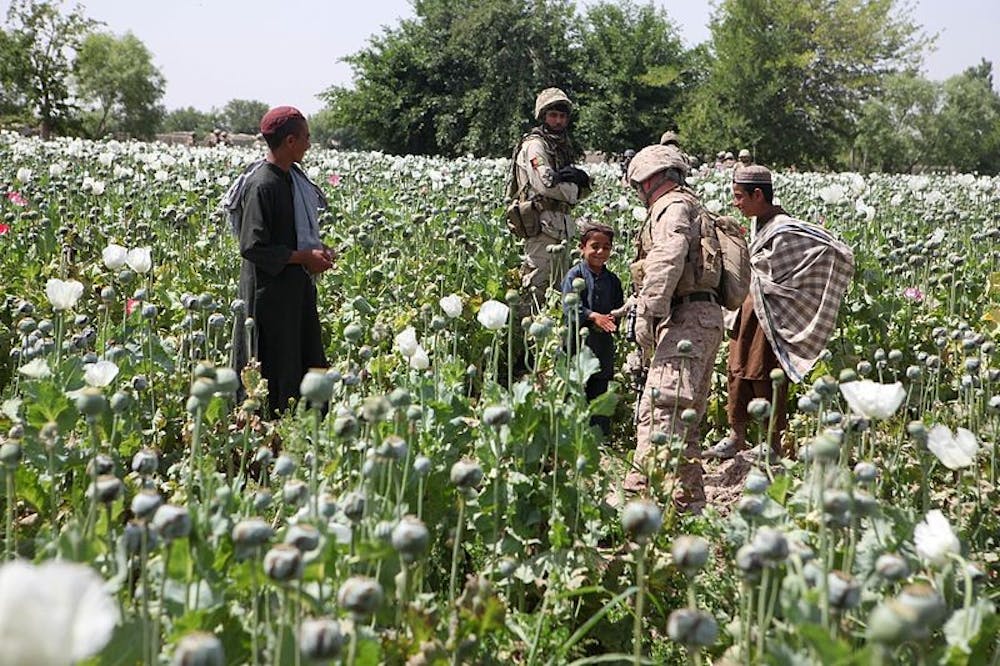No more than five years ago, a young woman graduated from Shippensburg University, just like what many of us are trying to do. She walked the same paths, ate from the same dining halls and went to the same classrooms as we do.
Her name was Brooke Fiorentino, and she no longer has the opportunity to come back to visit SU. That is because a silent epidemic is sweeping the region, and she was a casualty of it.
In her memory, friends and family are raising awareness about heroin addiction by hosting an event featuring professional and individual speakers, musical tributes and a candlelight vigil.
It will be held at 7 p.m. on April 10, at the Gettysburg Area Recreation Authority Amphitheater at 545 Long Lane. Everyone is encouraged to attend.
The growing heroin problem in Pennsylvania caught the attention of government officials when they began to realize heroin is cheaper than alcohol and is spreading from cities to rural communities, such as Shippensburg.
The Center for Rural Pennsylvania released a report last September to urge state lawmakers to introduce legislation to help save lives from drug overdoses.
“Right now we have a public health crisis facing rural Pennsylvania,” Gene Yaw, a state senator, said. “Although our focus was specifically on heroin use in rural Pennsylvania, we know addiction has no municipal, county or state boundaries.
“It is, across the board, a statewide and national epidemic impacting residents of every age, race, gender and socioeconomic background,” he added.
Heroin, while popular in the area, is not native to Pennsylvania. It is made from the opium poppy plant, which is often grown by poor farmers in regions such as the Middle East, southern Asia and in Latin America, according to PBS.
It takes three months for the petals on the plant to fall off, which exposes raw opium in a pod. Morphine is then extracted and refined, often close to where it was grown.
The National Institute on Drug Abuse (NIDA) reported heroin is produced from morphine combined with a number of other substances. The opium starts out as a milky sap and ends up as either a white powder or black paste as heroin.
The drug’s refining process can reportedly create 90 percent pure heroin, according to the Central Intelligence Agency (CIA). The substance is sold time and time again on the black market from one distributor to the next, each adding filler substances like caffeine to increase the volume.
Eventually it is smuggled across the border into the U.S. and can be half as pure as it once was. It enters the country in shipping containers, gas tanks, luggage and almost every other imaginable way.
In the late 1800s opium was used medically and recreationally before morphine or heroin was created. It became such a problem that morphine and heroin were manufactured as “non-addictive” alternatives to opium, according to the Foundation for a Drug-Free World.
Users soon found heroin to be more addictive than either opium or morphine.
The NIDA estimates approximately 23 percent of people who take heroin even once become dependent on it. There are several different ways to use it, including smoking it, injecting it and snorting it. All three methods bring the drug quickly to the brain — a reason for it being so addictive.
Another reason users keep taking it is because it delivers an intense euphoric feeling. The more an individual uses heroin the less he or she receives the desired effect. This causes users to take increasing amounts of the drug, which can lead to a fatal overdose.
Even if someone wants to break his or her addiction to heroin that person will undergo withdrawal, which is extremely unpleasant both physically and mentally and is a deterrent to quitting.
An addiction to heroin can enslave you, and it can kill you.
What starts out as a recreational activity can quickly turn into a deadly habit. Seeking counsel with a doctor, rehabilitation center, family member or friend can save someone from being a casualty.
A simple Internet search reveals there is an industry for the drug in countless towns across the region. The problem does just exist in metropolises miles away, but is present right here in Shippensburg.


The Slate welcomes thoughtful discussion on all of our stories, but please keep comments civil and on-topic. Read our full guidelines here.